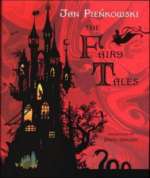
Stunning silhouettes and luminous marbleized backgrounds breathe new life into the earliest versions of classic fairy tales, embodying the dark magic and enchanting worlds of “Snow White,” “Sleeping Beauty,” “Hansel and Gretel,” and “Cinderella.”
Material appropriate for primary age groups

Stunning silhouettes and luminous marbleized backgrounds breathe new life into the earliest versions of classic fairy tales, embodying the dark magic and enchanting worlds of “Snow White,” “Sleeping Beauty,” “Hansel and Gretel,” and “Cinderella.”
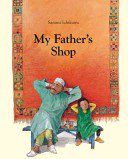
Despite his father’s wishes, a Moroccan carpet seller’s son doesn’t want to learn foreign languages, but when trying to make a rooster crow in a crowded, tourist-filled market, he inadvertently learns how roosters crow in many countries.
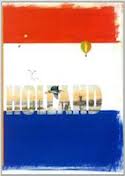
Holland – a land full of surprises, strange traditions, free-spirited people and a rich history. Charlotte Dematons, known for her well-loved picture book The Yellow Balloon, grew up in France, but moved to the Netherlands to study art as so many have before her. With the eye of an outsider but a warm heart for the country that became her new home, Charlotte Dematons paints with a keen eye for the detail for everything that makes The Netherlands so Dutch.
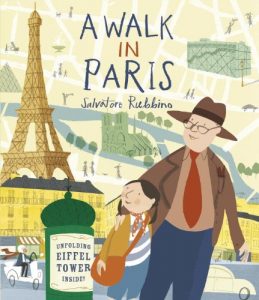 Vive la France! Join a girl and her grandfather on a walking tour through Paris. Follow them as they climb to the top of Notre Dame — formidable! — sample tasty treats at bistros and pâtisseries — délicieux! — and take in a stunning view of the Eiffel Tower — magnifique! Young Francophiles and armchair travelers will be charmed by Salvatore Rubbino’s lively, sophisticated illustrations and fascinating trivia about this beloved city.
Vive la France! Join a girl and her grandfather on a walking tour through Paris. Follow them as they climb to the top of Notre Dame — formidable! — sample tasty treats at bistros and pâtisseries — délicieux! — and take in a stunning view of the Eiffel Tower — magnifique! Young Francophiles and armchair travelers will be charmed by Salvatore Rubbino’s lively, sophisticated illustrations and fascinating trivia about this beloved city.
A strange little man helps the miller’s daughter spin straw into gold for the king on the condition that she will give him her first-born child.
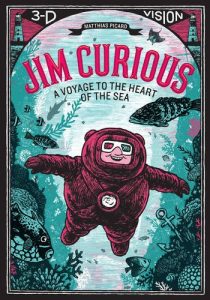 Jim Curious portrays the fantastical story of a young boy and his thrilling trip to the bottom of the sea in an old-fashioned diving suit. But there are no words telling his tale—only intricately illustrated images in exceptional 3-D. On his journey, Jim initially passes the garbage tossed into the waters by land-dwellers, but soon he goes deeper and deeper, immersing himself in the wonders of the waters. He encounters sea creatures large and small, a sunken pirate ship, and even the remnant of what seems to be Atlantis, before coming upon a mysterious force at the bottom that turns everything on its head.
Jim Curious portrays the fantastical story of a young boy and his thrilling trip to the bottom of the sea in an old-fashioned diving suit. But there are no words telling his tale—only intricately illustrated images in exceptional 3-D. On his journey, Jim initially passes the garbage tossed into the waters by land-dwellers, but soon he goes deeper and deeper, immersing himself in the wonders of the waters. He encounters sea creatures large and small, a sunken pirate ship, and even the remnant of what seems to be Atlantis, before coming upon a mysterious force at the bottom that turns everything on its head.
 Little Chick just wants to belong, but the bullies of the barnyard—Little Donkey, Little Pig, and Little Sheep—won’t let him play in their tree house because he is a chicken, and chickens are not strong and brave. Little Chick sees their point: What have chickens done besides invent the chicken dance and cross the road? But when his father shows Little Chick the family photo album, he learns something HUGE: He is related to the gigantic and ferocious Tyrannosaurus rex!
Little Chick just wants to belong, but the bullies of the barnyard—Little Donkey, Little Pig, and Little Sheep—won’t let him play in their tree house because he is a chicken, and chickens are not strong and brave. Little Chick sees their point: What have chickens done besides invent the chicken dance and cross the road? But when his father shows Little Chick the family photo album, he learns something HUGE: He is related to the gigantic and ferocious Tyrannosaurus rex!
 As a boy, Marconi loved science and invention. Born in 1874 in Bologna, Italy, to a wealthy family, Marconi grew up surrounded by books in his father’s library. He was fascinated with radio waves and learned Morse code, the language of the telegraph. A retired telegraph operator taught him how to tap messages on the telegraph machine. At the age of twenty, Marconi realized that no one had invented a wireless telegraph. Determined to find a way to use radio waves to send wireless messages, Marconi found his calling. And, thanks to his persistence, on December 12, 1901, for the first time ever, a wireless signal traveled between two continents.
As a boy, Marconi loved science and invention. Born in 1874 in Bologna, Italy, to a wealthy family, Marconi grew up surrounded by books in his father’s library. He was fascinated with radio waves and learned Morse code, the language of the telegraph. A retired telegraph operator taught him how to tap messages on the telegraph machine. At the age of twenty, Marconi realized that no one had invented a wireless telegraph. Determined to find a way to use radio waves to send wireless messages, Marconi found his calling. And, thanks to his persistence, on December 12, 1901, for the first time ever, a wireless signal traveled between two continents.